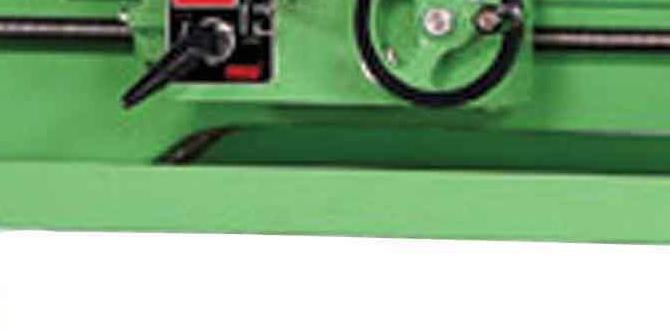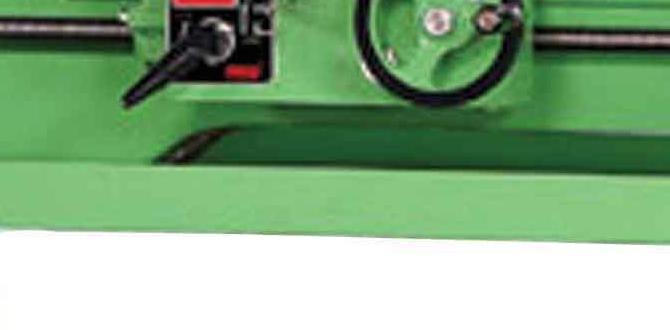Wood Lathe DIY Faceplate: Stunning Ideas to Enhance Your Projects
Wood lathe DIY faceplate ideas are a fantastic way to unlock new creative possibilities and enhance the functionality of your woodworking projects. Whether you’re a seasoned turner or a curious beginner, a well-crafted faceplate can open doors to intricate designs, larger workpieces, and specialized attachments that elevate standard lathe projects into works of art. Beyond the standard chuck, a faceplate offers a direct and secure mounting solution, crucial for tasks where precise alignment and robust holding power are paramount. Let’s dive into some inspiring ways to leverage this essential tool in your DIY endeavors.
Why Embrace a DIY Faceplate?
Before we explore the exciting project ideas, it’s worth understanding the fundamental advantages of using faceplates. Primarily, they provide a flat, stable mounting surface that is ideal for irregularly shaped blanks or when you need to maintain a specific axis of rotation for features that extend beyond the lathe’s chuck jaws. For larger bowls, platters, or items requiring extensive external carving after the initial shaping, a faceplate offers a more secure and often more economical solution than specialized chuck accessories. Furthermore, fabricating your own faceplate can be a rewarding mini-project in itself, allowing you to customize its size, thread, and even add features that suit your specific needs and lathe model.
Securing Irregular Blanks with Wood Lathe DIY Faceplate Ideas
One of the most common and effective uses for a wood lathe DIY faceplate is securing irregularly shaped or oversized blanks that might be challenging to mount with a traditional chuck. Think about those beautifully gnarled pieces of wood you’ve found, or the large slabs you’ve cut for ambitious bowl projects.
Large Bowl and Platter Mounting: For bowls exceeding the capacity of your chuck’s jaws, or for platters that require a large, flat mounting surface to prevent wobble, a faceplate is indispensable. You can drill and ream holes around the perimeter of your blank, then attach it securely to the faceplate with screws. This method ensures that the entire blank is held firmly, allowing you to turn with confidence and achieve smooth, consistent shapes.
Segmented Turning: While often chucked for initial assembly, large segmented bowls or platters may benefit from being transferred to a faceplate for the final stages of shaping, sanding, and finishing. This is particularly true if the circumference has become very large, making chuck jaws extend precariously.
Awkward Shaped Objects: Do you have a piece of driftwood with a unique form you want to turn into a decorative object? Gluing and screwing a faceplate to a flattened area allows you to mount and shape these challenging pieces without compromising stability.
Specialized Attachments and Jigs: Expanding Your Toolkit
Beyond simply holding wood, a DIY faceplate can serve as the foundation for a variety of specialized attachments and jigs that dramatically expand your lathe’s capabilities. This is where creativity truly shines with wood lathe DIY faceplate ideas.
Sanding Jigs: Imagine a large sanding disc or drum that you can easily attach and remove. By creating a DIY faceplate with a central hole and a robust mounting system, you can build precise sanding jigs. These jigs can be designed to hold sandpaper securely, allowing you to achieve perfectly flat or consistently curved surfaces on larger items with ease.
Carving Aids: For woodcarvers tackling large projects on the lathe, a faceplate can be the anchor for specialized carving rests or supports. These can provide extra stability for larger chisels or allow for unique carving techniques that wouldn’t be possible with standard tooling.
Indexing and Dividing Attachments: While most lathes have built-in indexing mechanisms, a custom DIY faceplate can be adapted to fit specialized indexing plates or gears. This is particularly useful for projects requiring precise spacing of decorative elements, such as fluting, reeding, or inlay patterns. You could even design a faceplate with pre-drilled holes for a temporary indexing pin, enabling you to achieve equally spaced marks for intricate designs.
Mortising Attachments: For those who wish to create mortises on the lathe, a DIY faceplate can be part of a custom jig. By bolting a piece of steel or hardwood to the faceplate, you can create a solid platform to hold a mortising chisel or bit securely at the desired depth and location.
Decorative Applications and Unique Projects
The aesthetic possibilities of wood lathe DIY faceplate ideas extend beyond structural support. The faceplate itself can become an integrated design element, or it can enable unique decorative techniques.
Exposed Hardware Designs: Sometimes, the look of metallic hardware on a turned object can be a deliberate design choice. A well-finished metal faceplate, perhaps with decorative drilling or engraving, can add a steampunk or industrial aesthetic to your turnings. The key here is to ensure the faceplate is balanced and securely fastened to avoid vibration or safety hazards.
Specialty Woodturning Techniques: Certain advanced woodturning techniques necessitate a flat mounting surface. For example, if you plan to inlay a large band of metal or another material into the face of a platter after it’s been initially shaped, a faceplate provides the necessary stability for this precise operation.
Creating “Cheeks” for Large Projects: When turning very wide bowls or platters, you might need to create temporary “cheeks” or stabilizing supports that extend from the faceplate to help hold the workpiece true. These can be fabricated from sturdy wood or metal and bolted to the DIY faceplate, offering support at the outer edges of your turning.
Safety Considerations When Implementing Your Wood Lathe DIY Faceplate Ideas
As with any woodworking project, safety should always be your top priority. When working with a DIY faceplate, remember these crucial points:
Material Strength: Ensure the material you choose for your faceplate is robust enough for the intended use. Steel or thick, high-quality hardwood are common choices. Avoid materials that are prone to cracking or breaking under stress.
Secure Fastening: Whether attaching the faceplate to the lathe spindle or attaching your workpiece to the faceplate, ensure all connections are incredibly secure. Use appropriate screws, bolts, and washers. Regularly check their tightness.
Balancing: An unbalanced faceplate or workpiece can lead to dangerous vibrations. Take time to balance your setup as accurately as possible, especially when turning at higher speeds.
Tool Rest Placement: Always ensure your tool rest is positioned correctly and at a safe distance from the rotating workpiece.
Personal Protective Equipment (PPE): Always wear safety glasses, a dust mask, and hearing protection. Consider a face shield for added protection.
Test Runs: Start with slower speeds when testing a new DIY faceplate setup. Gradually increase speed only when you are confident in the stability and security of your workpiece.
By embracing the versatility and ingenuity that wood lathe DIY faceplate ideas offer, you can significantly expand your woodworking horizons. From tackling larger and more irregularly shaped projects to creating custom jigs and attachments, the humble faceplate can become an invaluable asset in your workshop, leading to stunning and unique creations. Experiment, innovate, and always prioritize safety to make the most of this essential tool.



